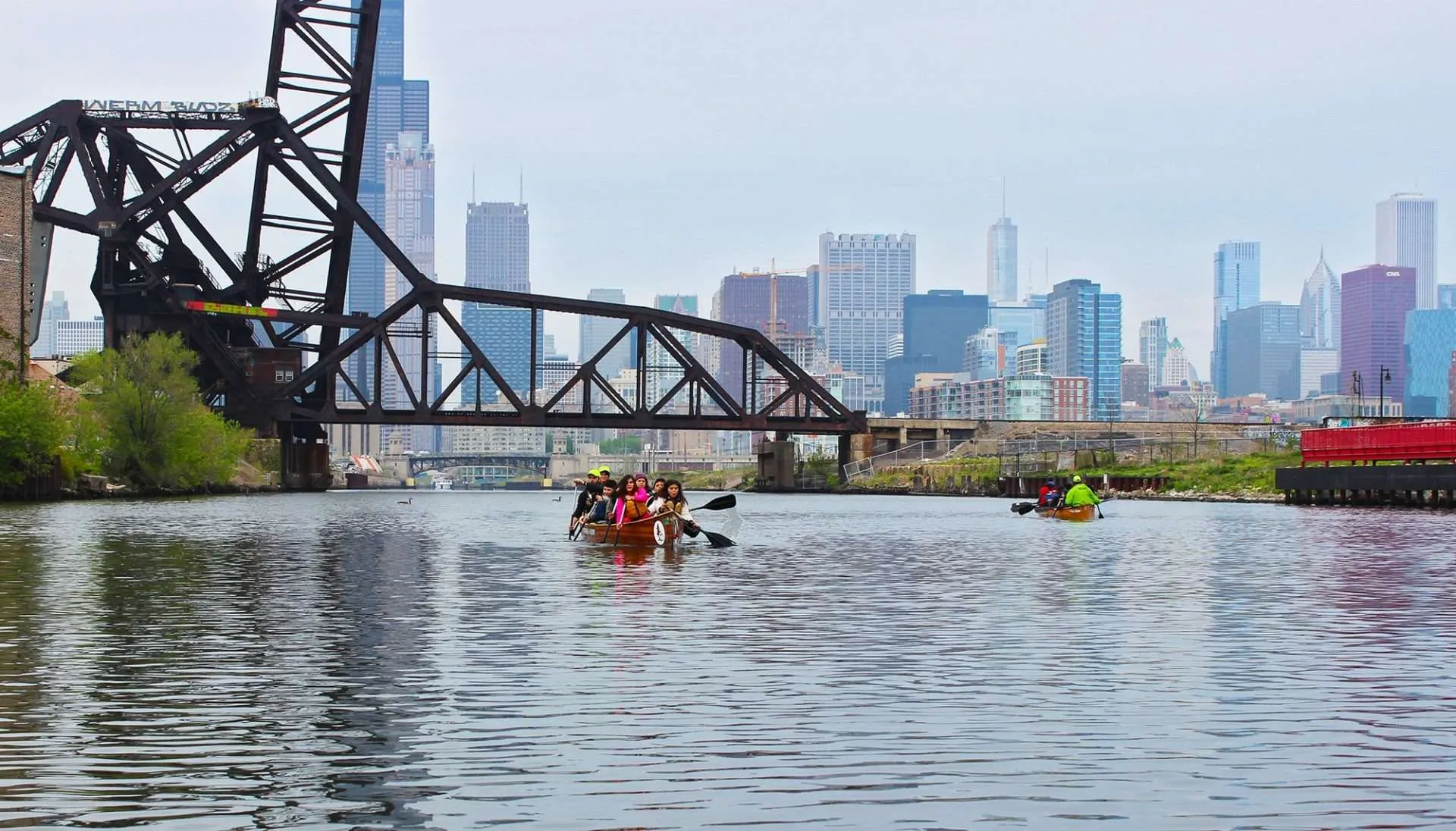Chicago River Water Trails
The Chicago River is a long, diverse waterway that begins in Lake County. It includes the Skokie River, Skokie Lagoons, the West and Middle Forks of the North Branch, the North Shore Channel, the North Branch, the North Branch Canal (the east channel around Goose Island), the Main Branch in the downtown area of the city, the South Branch, the South Fork of the South Branch (Bubbly Creek), and the Sanitary and Ship Canal leading to the National Historic Site of the Chicago Portage Area around 47th Street and Harlem Avenue, southwest of the city. Its location between the Great Lakes and the Mississippi River watersheds is one reason why Chicago became the second largest non-coastal city in North America.



